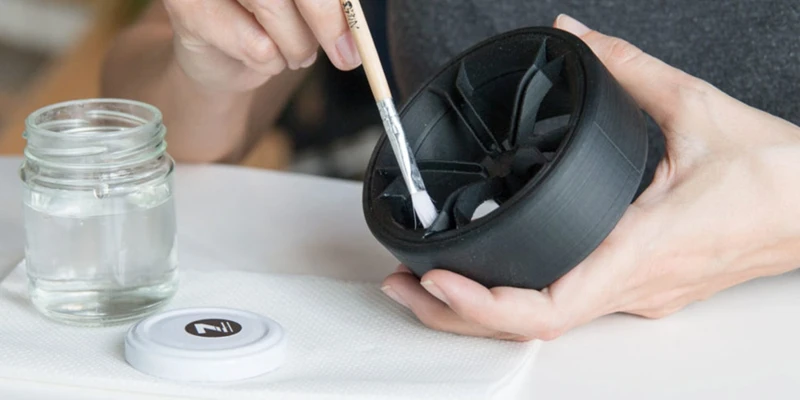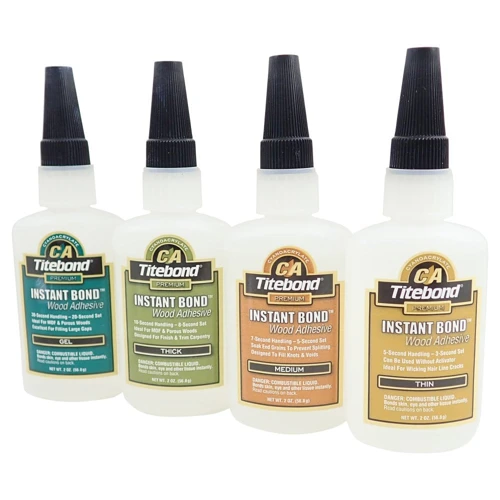Gluing PETG, a thermoplastic known for its durability and clarity, can be a bit of a challenge. Whether you’re repairing a broken piece or piecing together a new project, understanding the right techniques for bonding PETG plastic is crucial. This comprehensive guide will provide essential gluing PETG tips and highlight the PETG adhesive guide to help you achieve a reliable and enduring bond.
Understanding PETG Plastic
Properties of PETG Material
PETG, or polyethylene terephthalate glycol, is a plastic commonly used in a variety of applications due to its impressive properties. It’s known for its high strength, impact resistance, and transparency. Additionally, it’s safe for food contact and can be sterilized, making it ideal for medical and food packaging uses. Its ease of thermoforming and printing also make it a favorite in the 3D printing community.
Challenges in Bonding PETG Plastic
Despite its versatility, PETG can present unique challenges when bonding. The very qualities that make it desirable also make it difficult to adhere without the correct methods and adhesives. Its chemical resistance means that not all glues will work effectively, and its smooth surface can hinder adhesion without proper preparation.
PETG Adhesive Guide
Preparing the Surface for Adhesion
- Clean the surface thoroughly to remove any dirt, grease, or oils.
- Roughen the surface with a fine-grit sandpaper to increase the bonding area.
- Wipe down again with isopropyl alcohol to remove any remaining particles.
Types of Adhesives Suitable for PETG
When choosing an adhesive, it’s important to consider one that is compatible with PETG’s chemical structure. Suitable adhesives include cyanoacrylate, two-part epoxies, certain polyurethane glues, and solvent-based adhesives. Each type has its own set of properties that can be beneficial depending on the application.
Best Glue for PETG
Cyanoacrylate (Superglue)
Cyanoacrylate, often referred to as superglue, is a popular choice for how to bond PETG due to its quick setting time and strong bond. It works well for small repairs and is easy to use, although it can be brittle and is not always the best choice for load-bearing applications.
Two-Part Epoxy
For a stronger and more durable bond, two-part epoxies are ideal. These adhesives cure to form a hard, solid bond that can handle stress and strain. They are a great option for larger projects that require a best glue for PETG that can withstand wear and tear.
Polyurethane Glue
Polyurethane glue is another effective option for PETG plastic repair. It has a flexible bond, which can be advantageous for items that may experience expansion and contraction. Moreover, it’s waterproof and can be sanded or painted once cured.
Solvent-Based Adhesives
Solvent-based adhesives dissolve the surface of the PETG, fusing the pieces together for a seamless bond. This type of adhesive is ideal for creating an almost invisible joint, especially in clear PETG applications, where a neat finish is desirable.
Gluing PETG Tips
Techniques for a Strong Bond
Achieving a strong bond PETG techniques include ensuring the adhesive is applied evenly and in the right quantity. It’s also important to join the pieces accurately and quickly once the glue is applied, as some adhesives have a fast curing time. Pressure should be applied to the bond to help the adhesive set correctly.
Clamping and Curing Times
Clamping the pieces together during the curing time is crucial for maintaining contact and pressure. The curing time can vary depending on the adhesive; therefore, refer to the manufacturer’s instructions for the best results. Never rush the curing process as it can weaken the bond.
PETG Solvent Bonding
How to Bond PETG with Solvents
PETG solvent bonding is a technique that involves applying a solvent to the surfaces of the PETG, which slightly melts them. When the solvent evaporates, the plastic hardens again, creating a bond as strong as the material itself. This method is particularly useful for complex shapes and seamless joints.
Safety Considerations for Solvent Bonding
When using solvents, safety is paramount. Always work in a well-ventilated area, wear appropriate safety gear such as gloves and goggles, and follow all safety instructions provided with the solvent. Proper handling ensures both a successful bond and your safety.
PETG Joining Techniques
Welding PETG Components
Welding is another method in the PETG joining techniques arsenal. It involves using heat to melt the PETG parts together. This approach requires specialized equipment and skills, but it can provide an exceptionally strong bond for structural applications.
Using a 3D Pen for Joining PETG
For 3D printing enthusiasts, a 3D pen can be used to join PETG pieces. The pen extrudes melted PETG filament to fill gaps and bond parts together. This method is particularly useful for repairing 3D prints or adding additional strength to weak spots.
PETG Plastic Repair
Identifying and Repairing Cracks or Breaks
Identifying the extent of the damage is the first step in PETG plastic repair. Once assessed, choose an adhesive that is suitable for the size and location of the crack or break. Apply the adhesive carefully and clamp if necessary to ensure a proper bond as the glue sets.
Adhesive for PETG Filament in 3D Printing
When repairing 3D printed objects or bonding separate prints, using an adhesive for PETG filament is essential. The chosen glue should be compatible with PETG and capable of creating a bond that will hold up to the stresses the print may encounter.
If you’re a DIY enthusiast or hobbyist looking to work with different materials, you might find our collection of guides quite helpful. For those interested in working with PETG, our article on How To Glue PETG offers a detailed step-by-step process on achieving strong bonds with this popular thermoplastic. Additionally, if you’re involved in coral fragging, our tutorial on how to glue frags can be incredibly useful for your aquarium projects.
For 3D printing aficionados, figuring out the best way to adhere PLA pieces can be a challenge, but our guide on how to glue PLA provides valuable tips to ensure your models are pieced together perfectly. And for a bit of fun, especially if you’re looking to engage in some creative crafting with the kids, check out our article on how to make glue stick slime for an easy and entertaining project.
Conclusion: Achieving a Strong Bond with PETG Techniques
Mastering the art of gluing PETG means understanding the material, selecting the right adhesive, and applying the best techniques for the job at hand. By following this PETG adhesive guide and employing strong bond PETG techniques, you can ensure a successful and durable bond for all your PETG projects.


